Federal Reserve Bank of Kansas City and Money Museum
Introduction
Text-to-speech Audio
Originally located downtown, the Kansas City Federal Reserve Bank has continued to serve several states throughout the Midwest and Southwest since 1907. The Federal Reserve is one of the most important financial institutions in the country that regulates and controls the flow of money. Due to growing responsibilities at the Kansas City branch, a new building was constructed in 2008. Located inside the bank, the Money Museum features President Truman’s extensive coin collection and offers free, self-guided tours where guests have the unique opportunity to get their hands on a solid gold bar, setting the Kansas City Federal Reserve apart from other banks.
Images
The current location of the Kansas City Federal Reserve Bank and Money Museum at 1 Memorial Drive.
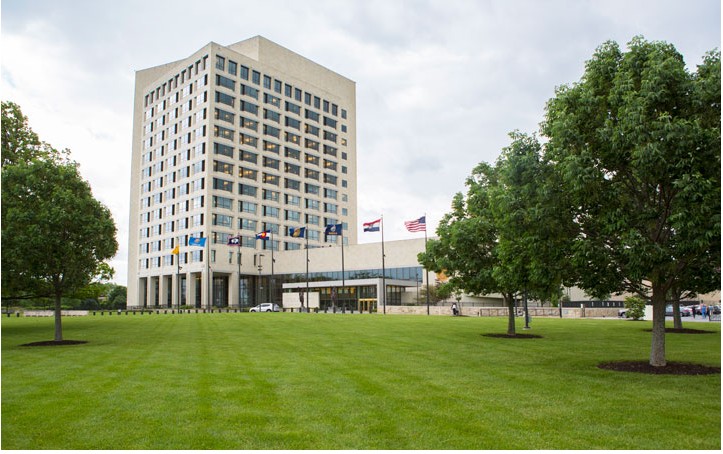
The Spirits of Commerce and Industry adorn the entrance to the Kansas City Federal Reserve Bank. They were inspired by carvings at the original FED building downtown completed in 1921.
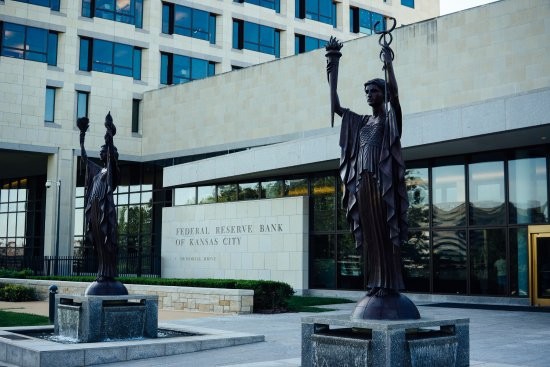
The Money Museum's gold bar exhibit.
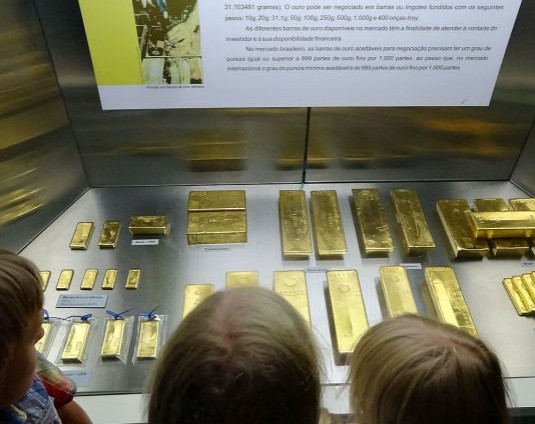
The President Truman coin collection, in the Money Museum.
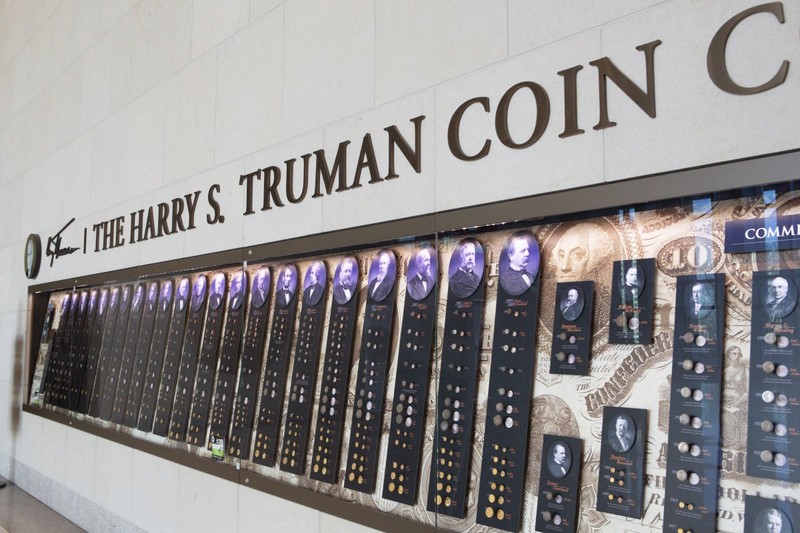
The first location of the KC FED was at the R.A. Long Building, constructed in 1907. Courtesy of Missouri Valley Special Collections, Kansas City Public Library, Kansas City, Missouri.
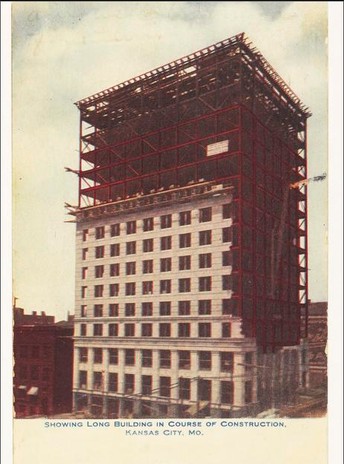
The Kansas City Federal Reserve building was constructed downtown in 1921 at 925 Grand and remained there until 2008.
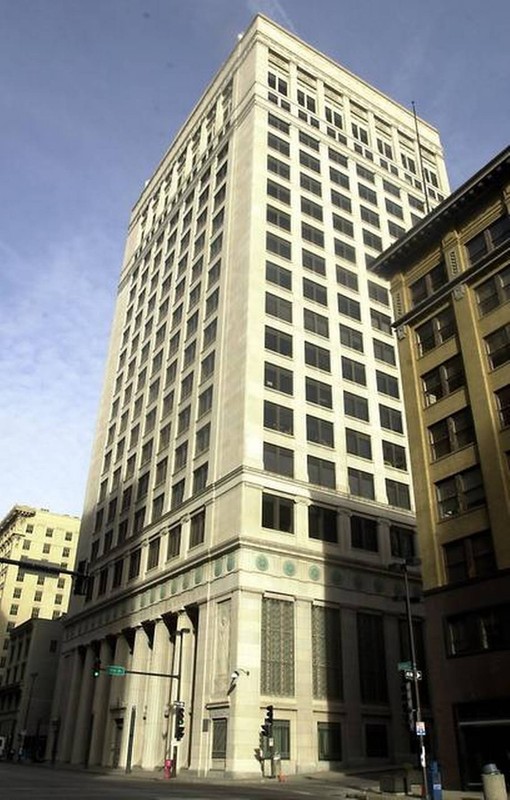
Backstory and Context
Text-to-speech Audio
The Federal Reserve, known as the FED, is an indispensable part of Kansas City history and modern banking. It was actually the third national bank of the United States, as the first one fell victim to congressional bureaucracy and the second one was largely scapegoated for many of America’s woes by Andrew Jackson, who eventually refused to renew the bank charter in 1836, effectively dismantling the whole system. From then, economic and societal panic and collapse followed without a regulated and insured national bank. It was not until President Woodrow Wilson’s tenure in 1913, that American legislators finally agreed enough to bring back a nationalized bank, but it was up to Wilson to implement this new bank.
A new national Bank became an obvious necessity after the economic turmoil brought on by the panic of 1907, and most members within the national government agreed to fix the problem. By 1910, two federal commissions headed up by Republican senate minority leader Nelson Aldrich went out to investigate both the state of the American monetary system and the banking systems in Europe. Aldrich, the rest of Congress, and various American banking experts then devised the basic plan that would come to be the Federal Reserve system. The bones of their plan was to have a single, centralized national bank in the nation's capital, Washington, D.C., with fifteen separate branches of the bank geographically spread out to service the most Americans. This plan was known as the ‘Aldrich plan’ and in the spirit of bipartisanship, Democrat president Woodrow Wilson resolved to change very little of the original plan after he took office in the wake of the 1912 election. The largest change Wilson made was giving more power over the banks to the government in the form of control over the board of directors.
The banks themselves serve very important roles in the American economy. One major problem that caused the financial panics prior to the FED was that small banks that did not have enough cash reserves to keep up when all their customers wanted to withdraw, so those banks collapsed and their customers lost their money. The FED provided a federally backed lender of last resort to prevent banks from collapsing and safeguard American’s savings. They have also been known to give out massive loans to prevent large companies from collapsing, all in the name of preserving the status quo, and preventing large-scale economic hardship. The Federal Reserve Banks also serve as a central bank, controlling cash flow, and acting as a regulatory body for the rest of the nation's banks and financial institutions.
Notably, Missouri is the only State with multiple Federal Reserve Banks. When the government was initially surveying the country for important population centers to place the banks, they determined that both St. Louis and Kansas City were isolated and important enough to warrant their own bank. Each city serves as the commercial center of a large area that crosses state lines, so it was only practical for Missouri to have two. The Kansas City branch serves western Missouri, Nebraska, Kansas, Oklahoma, Wyoming, Colorado & northern New Mexico, and has branch locations in Denver, Omaha, and Oklahoma City. Initially the Kansas City Federal Reserve was housed in the R.A. Long Building at 928 Grand. Built in 1907, it was the first building in Kansas City with an all steel frame and one of the first fireproof buildings in Kansas City, making it ideal for housing money. It was always temporary though, as the FED required more office space than the building could provide, so a replacement building was quickly ordered and completed across the street in 1921. Due to a growing workforce and additional responsibilities given to the Kansas City branch, a new headquarters was built in 2008 at 1 Memorial Drive.
After the end of his presidency in 1954, a financially bereft Harry Truman moved back to his home state of Missouri. He made his new office in the Kansas City branch of the FED and split his time between his office in his presidential library in Independence. From those offices he wrote his memoirs and managed his post-presidency affairs. Truman’s legacy remains at the bank in the form of his extensive coin collection that has been put on display within the Money Museum. This is a small museum inside the FED that covers the history and importance of currency, giving guests a relaxed and judgment free environment to learn about inflation, deficits, and all the complicated aspects of the economy and personal finances. The Money Museum also offers unique opportunities to do things like lift a real bar of gold and get acquainted with the many currencies of the world and of the past.
Sources
Federal Reserve. Accessed June 28th 2022. https://www.federalreserve.gov.
Federal Reserve Bank of Kansas City. Accessed June 28th 2022. https://www.kansascityfed.org.
Truman, Truman Library Institute . Accessed June 28th 2022. https://www.trumanlibraryinstitute.org/truman/.
https://www.federalreservehistory.org/essays/kansas-city-fed
https://www.tripadvisor.in/LocationPhotoDirectLink-g44535-d1812006-i279028434-The_Money_Museum-Kansas_City_Missouri.html
https://www.visitkansascityks.com/listing/the-money-museum-at-the-federal-reserve-bank-of-kansas-city/374/
https://www.kansascityfed.org/moneymuseum/harry-s-truman-coin-collection/
https://kchistory.org/image/ra-long-building-0
The Kansas City Star
